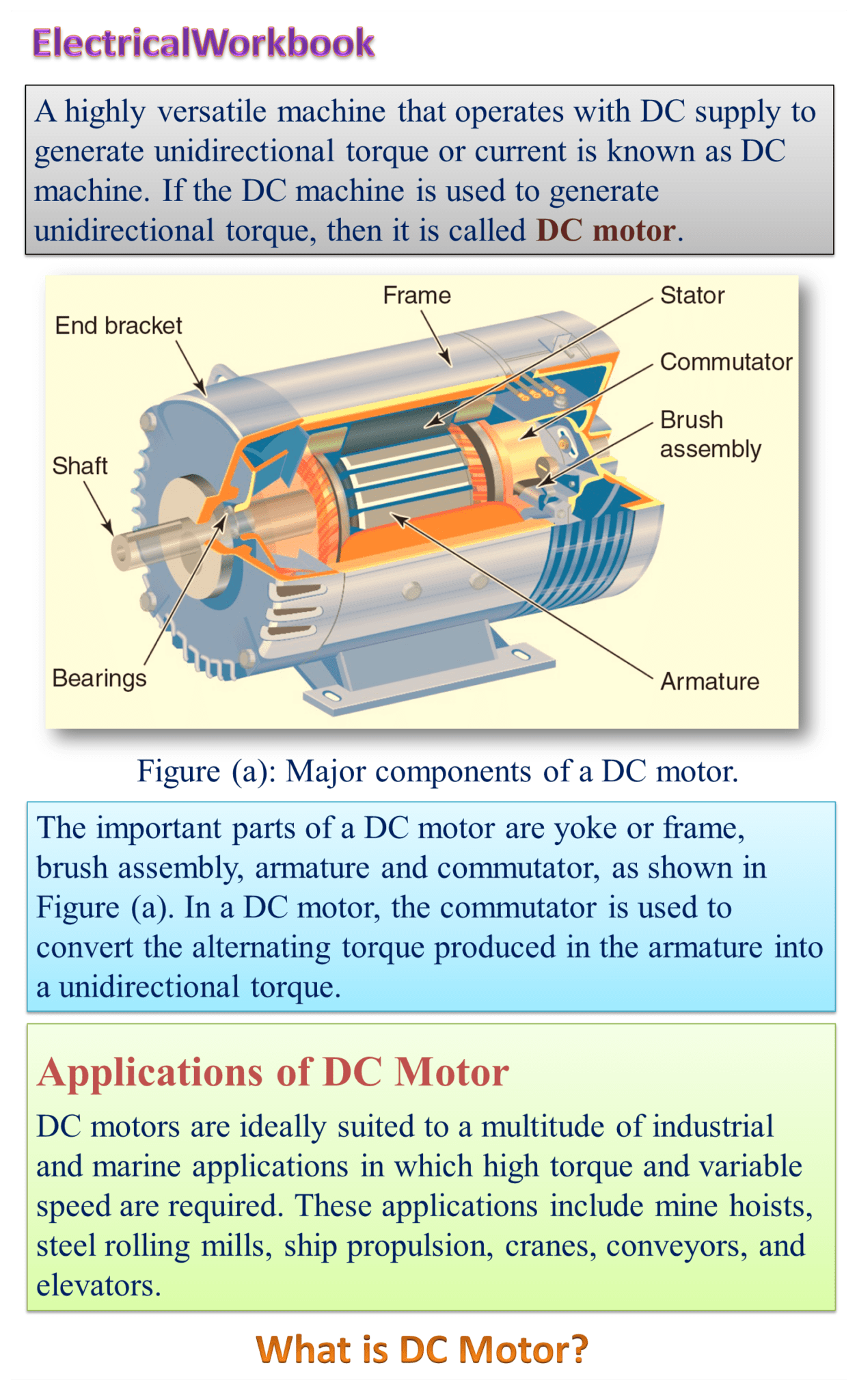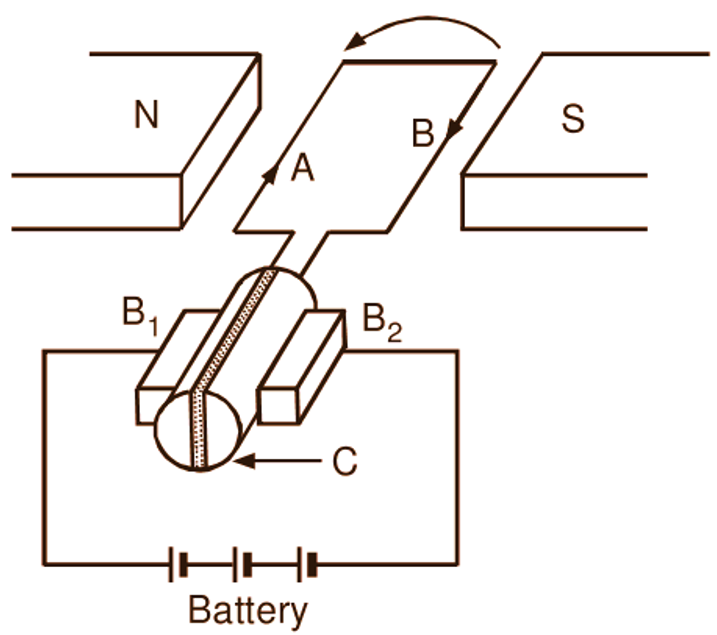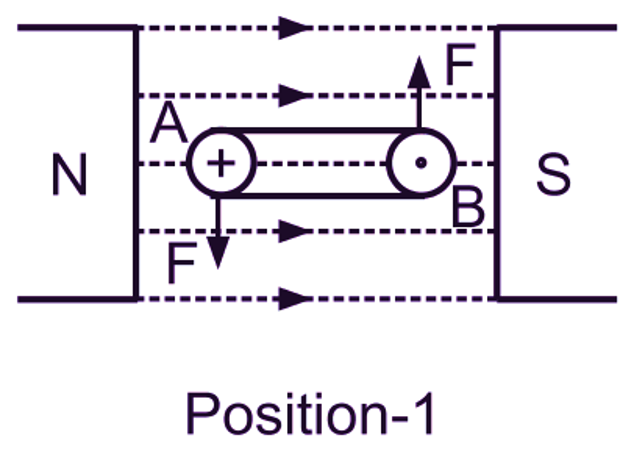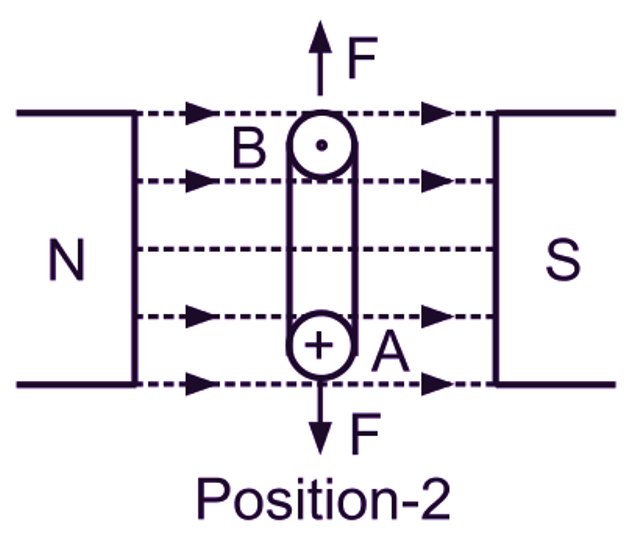In this topic, you study DC Motor – Diagram & Working.

The dc motors operate on direct current. The study of an elementary dc motor is very useful in understanding the working of a dc motor. Let us therefore first study the elementary dc motor.
Elementary DC Motor
Fig. 1 shows a single coil elementary dc motor.

Fig.1: An elementary DC Motor
Construction of DC Motor
The construction of this elementary dc motor is exactly similar to that of an elementary dc generator except that the armature coil is supplied with direct current through the brushes in contact with the commutator segments using some direct current source like battery.
Working of DC Motor
Being in the magnetic field of the magnet, each current carrying conductor(A and B) of the armature coil experiences a force which ultimately results into rotation ofthe armature coil. To understand how unidirectional torque is produced in a dc motor, consider the armature coil in its different positions as shown in Fig. 2.



Fig.2: Torque developed at different positions of the coil
Position No. 1: In this position, plane of the coil lies parallel to a magnetic field. The direction of the current in the conductor A is into the plane of the paper and in the conductorB it is out of the plane of the paper. Therefore, the conductor A tends to move downward and the conductor B tends to move upward with equal force F (by Fleming’s left hand rule or considering the resultant field pattern). These two forces thus produce a torque tending to rotate the coil about its axis in a counterclockwise direction. In this position, the coil experiences maximum torque because the perpendicular distance between two forces is also maximum.
Position No. 2: When the coil reaches this position, the two forces being opposite to each other and the perpendicular distance between them being zero, the torque experienced by the coil is also zero. Therefore, the coil tends to remain stationary in this position.
Position No. 3: Even though the coil has tendency to remain stationary in Position-2, because of its inertia, it crosses this position and at the same time, the direction of the current in the coil is reversed by the commutator. Therefore, the coil continues to experience the torque in the counterclockwise direction only. Thus, the commutator plays a very important part in the operation of the dc motor. It reverses the current in each conductor of the armature as it passes from one pole to another and thus helps to develop a continuous and unidirectional torque.
PRACTICAL DC MOTORS
A single coil elementary dc motor shown in Fig. 1 is almost impractical because of pulsating torque developed by it. In the practical dc motor, by using number of coils evenly distributed around the armature core and connecting these coils to a commutator having a corresponding number of segments, a more uniform torque is obtained. Practical dc motors are similar in construction to direct current generators. In fact, as already mentioned previously, the same machine can be interchangeably used as a generator or motor.